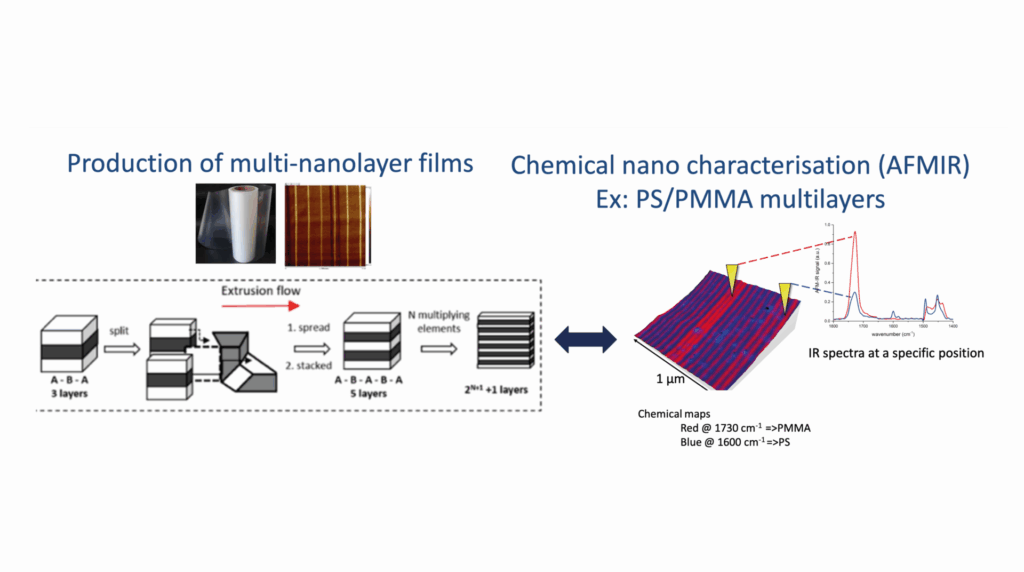Nano-characterization of polymer-polymer interfaces
Nano-characterization of polymer-polymer interfaces: toward a betterunderstanding of multinanolayer polymers and upcycling mixed plastics
Modern society is highly dependent on plastic, and uses it to produce many common items, especially in packaging goods and foods. Nowadays, the mismanagement of plastic waste has induced several serious environmental issues. The most effective solutions to global plastic problems could be to increase their recycling and upcycling rates or propose new recyclable multilayer structures.
However, immiscible blends exhibit poor mechanical properties, with a lack of adhesion at their interfaces, that hinder upcycling efforts: due to sorting issues, it is often cheaper to produce new plastic products from virgin materials than to recycle and reuse existing materials.
To improve the properties of the recycled blends, several methods have been proposed, such as in-situ compatibilization or nanostructured blending. In either strategy, a deep understanding of the interfacial physico-chemical and mechanical properties is needed.
By combining advanced chemical and mechanical characterization techniques with an innovative process which provides a control of the nanostratified polymers morphology, we aim at probing quantitatively both the interphase at the nanoscale and how they evolve during the lifetime of the material. This approach is expected to help design new materials from virgin or recycled plastics with better properties.


